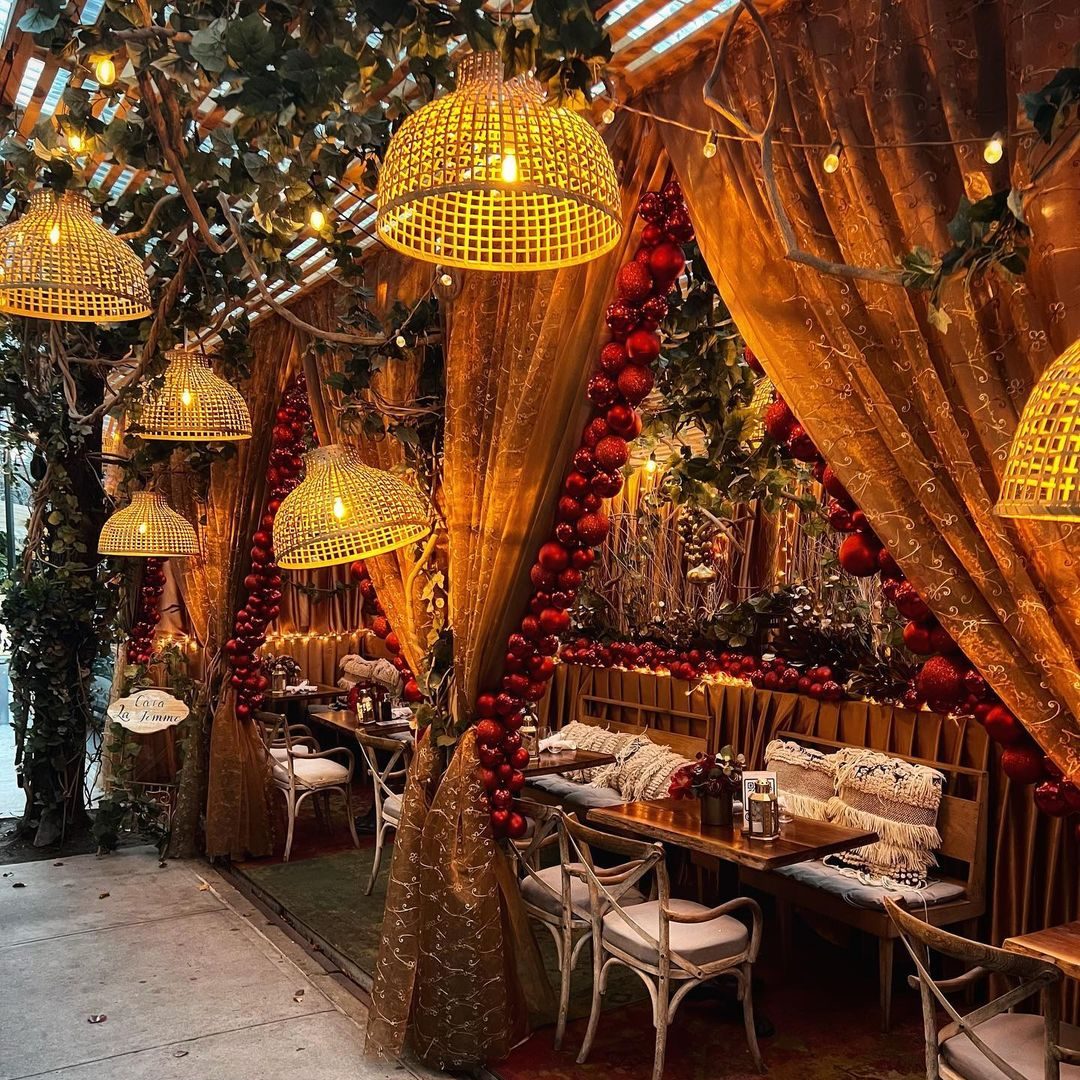Best Asian Restaurant Islamabad: Experience Flavors from Across Asia
Best Asian Restaurant Islamabad: Experience Flavors from Across Asia
Blog Article
Savor Authentic Oriental Food With a Pan-Asian Spin for a Culinary Experience
Embarking on a culinary journey with authentic Oriental cuisine, boosted with a Pan-Asian spin, offers a special chance to explore the rich tapestry of flavors that specify the area's varied culinary customs. As you consider these tempting dishes, think about the cultural narratives and historical impacts that form them, each bite supplying a story waiting to be found. Instagrammable restaurants Islamabad.

Checking Out Pan-Asian Flavors
In the world of worldwide gastronomy, Pan-Asian cuisine attracts attention for its impressive diversity and the harmonious interaction of flavors from numerous Asian societies. This culinary strategy celebrates the distinct active ingredients and abundant traditions discovered across the continent, developing a tapestry of tastes that is both intriguing and gratifying. Key to Pan-Asian food is its capability to stabilize contrasting tastes-- sweet, salted, spicy, and sour-- while highlighting the freshness and quality of each active ingredient.
From the umami-rich soy sauce of Japan to the fiery chili peppers of Thailand, Pan-Asian cuisine supplies a considerable palette of tastes. These components are typically combined in innovative ways, enhancing recipes with layers of intricacy. For instance, making use of fragrant natural herbs such as lemongrass and cilantro, usual in Vietnamese and Thai cuisine, includes a rejuvenating illumination to dishes, while the consolidation of coconut milk supplies a creamy, rich structure.
The focus on fresh produce and aromatic seasonings makes certain that each dish is not only a feast for the taste yet additionally for the senses. Pan-Asian cuisine welcomes diners to embark on a cooking trip, exploring the large and differed landscapes of Asian gastronomy with every bite.
Fusion Meals to Try
While Pan-Asian food is celebrated for its conventional tastes, the contemporary culinary landscape is increasingly welcoming combination dishes that mix these traditional elements with impacts from other areas. This ingenious method not just honors the rich heritage of Eastern cookeries but additionally introduces unique taste experiences that appeal to modern palates.
An archetype of such a combination recipe is the Korean-Mexican taco, where marinaded bulgogi beef is wrapped in a cozy tortilla, topped with kimchi and a hot gochujang-infused salsa. This combination weds the bold, full-flavored tastes of Korea with the dynamic, fresh components of Mexican food. Likewise, sushi burritos have actually gained appeal, amalgamating the fragile virtuosity of Japanese sushi with the hearty, hand-held ease of a burrito, commonly featuring combination active ingredients like tempura shrimp and avocado with a drizzle of wasabi mayo.
One more significant dish is Thai curry ramen, which infuses the luscious, fragrant flavors of Thai curry into the reassuring broth of traditional Japanese ramen, developing a harmonious blend that tantalizes the detects. These blend recipes expand beyond simple novelty; they represent a culinary dialogue in between societies, encouraging exploration and development in the world of Pan-Asian food.
Necessary Components and Spices
To genuinely appreciate Pan-Asian food, one must recognize the necessary ingredients and flavors that develop its structure. This diverse cooking go design draws from an abundant tapestry of Asian practices, using an unified mix of tastes and appearances.
Fragrant elements are critical, with lemongrass, ginger, and garlic being ubiquitous throughout various Pan-Asian recipes. These components supply an aromatic base that improves the intricacy of tastes. Spices such as star anise, cardamom, and cinnamon present warmth and character, resembling influences from regions like China and India.

Cooking Methods and Tips
Understanding the art of Pan-Asian cuisine needs knowledge with its distinctive food preparation techniques, each adding to the vivid tapestry of flavors this cooking custom is celebrated for. Central to these techniques mama mia pizza is the stir-fry, a quick cooking strategy that maintains the nutritional honesty and vibrant colors of components. Utilizing a wok, the stir-fry technique enables also warm distribution, necessary for achieving the characteristic structure and flavor equilibrium of Pan-Asian meals.
Another fundamental technique is steaming, specifically common in Chinese cuisine. This mild technique keeps the all-natural tastes and nutrients of components, making it excellent for fish and shellfish and veggies. Dumplings, a beloved staple, usually benefit from steaming, leading to soft, delicious structures.
Grilling, likewise integral, imparts smoky depths to meals such as Oriental bulgogi or Japanese yakitori (best asian restaurant Islamabad). This technique commonly entails marinating components, permitting flavors to permeate deeply before cooking over an open fire or hot plate
Finally, understanding the art of stabilizing flavors-- wonderful, sour, salty, bitter, and umami-- is crucial. Appropriately layering these components can elevate a meal from ordinary to amazing, supplying a complicated and satisfying culinary experience that symbolizes the essence of Pan-Asian cuisine.
Dining Experiences Worldwide
Throughout the world, Pan-Asian cuisine offers an unrivaled dining experience, commemorated for its abundant tapestry of tastes and vibrant presentations. This culinary phenomenon has transcended social borders, recording the hearts and tastes of food enthusiasts worldwide. In worldwide cities like New York, London, and Sydney, Pan-Asian restaurants function as fusions where culinary practices from Thailand, Japan, China, and past converge, supplying diners with a diverse mix of dishes that highlight the region's diversity.
The worldwide appeal of Pan-Asian cuisine hinges on its ability to offer both authenticity and development. Chefs skillfully marry conventional active ingredients such as lemongrass, soy sauce, and miso with modern techniques, resulting in meals that are both refreshingly brand-new and acquainted. This combination allows diners to start a cooking journey that values heritage while welcoming modernity.
Moreover, dining experiences are elevated through thoughtfully designed environments that reflect the ethos of Pan-Asian aesthetics. From minimalist Japanese-inspired interiors to vibrant Thai-themed spaces, each restaurant offers an unique ambiance that enhances the cooking offerings. Therefore, clients are not simply taking in a meal but partaking in a cultural experience, making Pan-Asian eating an absolutely international click for source phenomenon.
Final Thought
The exploration of Pan-Asian food supplies an extensive understanding of the complex interplay of flavors and cooking practices across Asia. By embracing fusion recipes such as Thai curry ramen and sushi burritos, the cooking trip not only highlights the adaptability of traditional ingredients yet likewise showcases ingenious contemporary techniques. This gastronomic journey, improved by cooking approaches and necessary flavors, offers an unique possibility to appreciate the multiculturalism and culinary virtuosity that define Pan-Asian food on a worldwide scale.
Getting started on a culinary trip with authentic Eastern food, boosted with a Pan-Asian twist, supplies a special opportunity to discover the rich tapestry of tastes that specify the region's varied culinary practices.In the realm of international gastronomy, Pan-Asian cuisine stands out for its impressive diversity and the unified interplay of tastes from different Eastern cultures. Trick to Pan-Asian cuisine is its capacity to balance different flavors-- pleasant, salted, spicy, and sour-- while highlighting the freshness and high quality of each ingredient.

Report this page